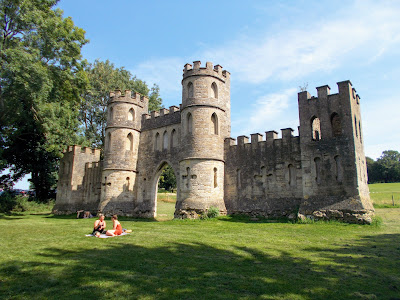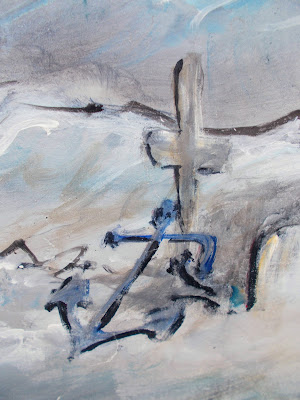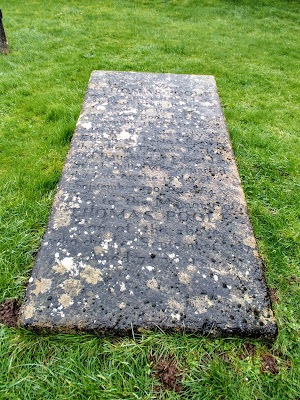Thomas Poole was born in Nether Stowey on 14th November 1766. His father Thomas was a tanner and farmer. He wanted his son to carry on his tanning business when he died, so he denied him a proper education and sent him to work as an apprentice in the tanyard from an early age. Thomas junior educated himself and taught himself Latin and French. In 1791 he represented the west country at a tanners meeting in London and was elected by them to speak to William Pitt about the distressed state of the tanning industry. He returned from London as a supporter of the French Revolution.
In 1793 Poole established the Nether Stowey Book Society. The members of the group met at The Globe Inn and bought books and exchanged books.
Thomas Poole was introduced to Samuel Taylor Coleridge for the first time in August 1794 by his relative Henry Poole of Stogursey, who brought him to Thomas's house in Castle Street. Coleridge was on a walking tour of Somerset with the poet Robert Southey. Thomas and Coleridge became great friends.
In 1795 there was hardship in Nether Stowey when the price of wheat increased rapidly due to the war with France. Poole, his mother and aunt created new recipes for cheaper loaves of bread e.g. using a mixture of wheat, barley, beans and potatoes or turnips. In 1796 Poole built a new barkhouse in Tanyard Lane.
Coleridge asked Poole to find him a house in Nether Stowey and on 1st January 1797 he moved into a house on Lime Street in Nether Stowey with his wife Sara and their baby son Hartley. In July 1797 Poole arranged for William and Dorothy Wordsworth to rent Alfoxton House on the edge of Holford. Also in 1797 Poole met the Staffordshire potters Josiah and Tom Wedgwood and he and Josiah became lifelong friends. Through his friendship with Coleridge and Wordsworth, Poole met several other influential people of his day: the essayist and poet Charles Lamb; the radical speaker, writer, poet, painter and political reformer John Thelwell; the essayist, critic and philosopher William Hazlitt.
Poole met the scientist and inventor of the miners' safety lamp, Humphry Davy in 1799 and Davy later became a regular visitor to Nether Stowey.
Poole went on a tour of Europe in 1802. In Paris he met the revolutionary and writer Thomas Paine (author of The Rights of Man) and was also presented to Napoleon Bonaparte. In the same year he met the civil servant John Rickman in London and in 1804 he compiled statistics for Rickman that were to be used to implement the poor laws.
In 1806 Poole founded the Nether Stowey Female Friendly Society. Members paid what they could afford and in return they received financial support when they were sick, gave birth, were widowed or in their old age. Poole met the essayist Thomas de Quincey in 1807.
In 1807 Thomas tried unsuccessfully to reopen the Dodington copper mine, which had closed down in 1891. He tried again in 1816 and built two new engine houses but the mine closed for the last time in 1821.
Poole donated a piece of land and paid for the building of a village school in Nether Stowey in 1812-13. The school was large enough to educate up to 200 local children. It was used as a school until 1979 when a new one was built and the building now houses the public library.
From 1814 until his death, Poole was a justice of the peace for Somerset.
To encourage local people to save money and give them access to banking services, Thomas founded the Quantock Savings Bank in Lime Street, Nether Stowey in 1817. The bank was in business until 1884.
Thomas Poole never married. He lived in a house now called Poole House in Castle Street, Nether Stowey until 1802 when he gave the house to Thomas Ward, who was his partner in the tanning business. Poole bought another house in St Mary Street, now called The Old House. He lived there until his death. He amassed a large library of books. Many people in the Nether Stowey area were suspicious of his radical views. Although he was a great philanthropist and had many friends, he had a short temper and could sometimes be abrupt and overbearing.
Thomas Poole died of pleurisy in Nether Stowey on 8th September 1837 aged 72. He was buried in the churchyard of St Mary's Church in the village.
Portrait of Thomas Poole in the Museum of Somerset in Taunton
Poole House in Castle Street, Nether Stowey
The Old House, St Mary Street, Nether Stowey
Quantock Savings Bank, Lime Street, Nether Stowey
Quantock Savings Bank, Lime Street, Nether Stowey
Old School, Nether Stowey (now the public library)
Thomas Poole's gravestone in St Mary's churchyard
Thomas Poole's Memorial inside St Mary's church























































